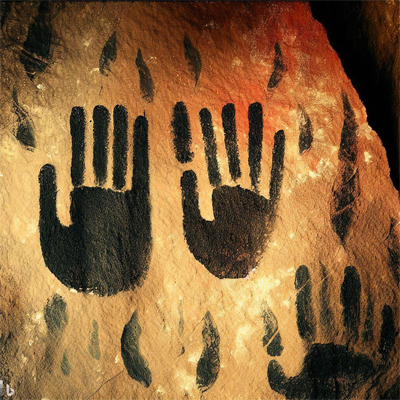What is the Significance of Cave Paintings?
Cave paintings, also known as rock art, are some of the most ancient forms of artistic expression known to man. They are found in many different parts of the world and date back to prehistoric times, providing a window into the lives of early humans. The significance of these paintings is profound and multifaceted, providing insights into ancient culture, history, and human evolution.
Firstly, cave paintings are significant in providing a glimpse into the beliefs and values of prehistoric societies. They depict images of animals, humans, and even abstract designs, which provide clues about the importance of these elements in the lives of early humans. For example, many of the cave paintings found in France and Spain depict images of bison, deer, and other animals, which may have been essential sources of food for these societies. The paintings may have also been used as part of religious rituals or shamanic practices, as some of the images depict humans with animal characteristics or surrounded by spiritual elements.
Secondly, cave paintings are significant in terms of understanding the history of human evolution. The oldest known cave paintings date back to approximately 40,000 years ago, which means they were created by Homo sapiens, the species to which modern humans belong. These paintings are a testament to the creative and artistic abilities of our ancient ancestors and help us to understand how humans have evolved over time.
Thirdly, cave paintings are significant in providing insight into the development of art as a form of human expression. These paintings were created using natural materials, such as charcoal and ochre, and were often made on rough surfaces, such as cave walls. Despite the challenging nature of the medium, early humans were able to create intricate and beautiful works of art that have endured for tens of thousands of years.
Fourthly, in some cases, cave paintings may have been employed by our early ancestors to manifest the things they needed to sustain their existence. We believe that early man thought that the Spirit of the Earth flowed from the center of the earth and issued forth from the mouth of caves. This may be evidenced, for example, by the depiction of the successful hunt in many cave paintings. Early man must have thought that the Earth Spirit would manifest a successful hunt for his tribe as it passed the cave painting. Some cave paintings of the successful hunt have been painted over as many as a thousand times!
Another example of manifestation by earth spirit using cave paintings may be the assemblage of stenciled hand prints. The hand prints were created by early Shamans and cave-painting artists who blew ground minerals mixed with water that were blown through hollow bones over outstretched hands. We believe that these were done for two reasons: one, it was the signature of the cave painting artist or Shaman and two, they were hand prints of adolescents who had reached puberty and needed spirit to become pregnant in order to sustain the tribes’ existence moving forward. A great example of stenciled hand prints may be found here: The Cave of the Hands.
Lastly, cave paintings are significant because they have inspired and influenced artists throughout history. Many modern artists have looked to the cave paintings for inspiration, and some have even replicated the techniques used by early humans in their own work. In this way, cave paintings have become a link between the ancient past and the present.
In conclusion, cave paintings are significant because they provide a unique window into the lives of early humans, help us understand the history of human evolution, demonstrate the development of art as a form of human expression, and have inspired and influenced artists throughout history. They are a remarkable testament to the creativity and ingenuity of our ancient ancestors and a valuable part of our shared cultural heritage.
Hits: 44
